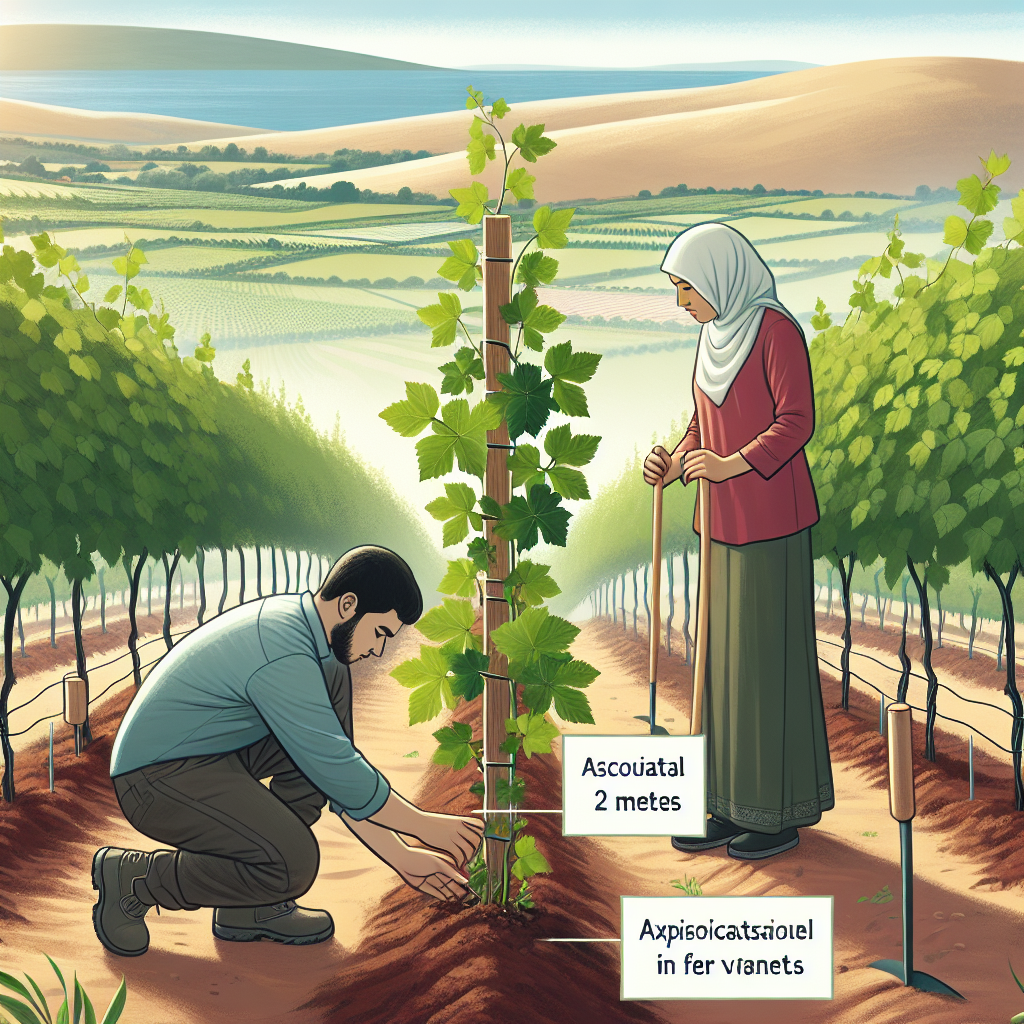
How close to plant grapes
Understanding the Basics: How Close to Plant Grapes
Growing grapes can be a rewarding and fruitful endeavor for both hobbyists and commercial growers. Whether you're interested in cultivating your own vineyard or have a small backyard space, knowing **how close to plant grapes** is key to thriving plants and a bountiful harvest. In this article, we'll delve into the various factors that influence planting distance and optimal spacing for grapevines, ensuring you give your grapes the best chance to flourish.
Choosing the Right Variety of Grapes
Before you even think about spacing, it’s important to consider what type of grapes you want to plant. Different varieties can have different requirements in terms of space. Below are some popular grape varieties and a brief description of their characteristics:
- Concord Grapes: Often used for jams and jellies, they thrive in cooler climates.
- Thompson Seedless Grapes: Very popular for eating fresh and raisins, require a warm climate.
- Cabernet Sauvignon: A well-known red wine grape that is often suited for warmer regions.
- Chardonnay: Another popular wine grape that can tolerate varied soil conditions.
Factors to Consider Before Planting
When planning your grape garden, consider these factors that can affect **how close to plant grapes**:
1. Soil Quality
Grapes thrive in well-drained soils with good organic matter. Conduct a soil test to determine the pH and nutrient levels. The ideal pH for grapevines is between 5.5 and 7.0. Poor drainage can lead to root rot, affecting plant growth. If your soil is dense or clay-heavy, you might need to amend it before planting.
2. Sunlight Exposure
Grape vines require full sun for optimal growth. Aim for at least 6 to 8 hours of direct sunlight each day. If the area you plan to plant receives insufficient light, consider trimming nearby trees or selecting a different location.
3. Climate Conditions
Your local climate can significantly influence the development of grapevines. Warmer regions generally allow for a broader selection of grape varieties, whereas cooler climates may limit options. Be sure to choose varieties that are suited to your USDA hardiness zone.
4. Planting Method
Will you plant your grapes from seeds, cuttings, or nursery plants? Each method may necessitate different spacing practices. Generally, if planting from seeds, you may want to space them closer until they are established. In contrast, nursery plants are typically ready to be placed farther apart.
Optimal Spacing Guidelines for Grapes
Once you have selected your grape variety and accounted for environmental factors, the next step is to determine the appropriate spacing. Here are some general guidelines:
1. Row Spacing
For most grape varieties, you should plant the rows about 8 to 10 feet apart. This allows adequate airflow and sunlight, which is essential for preventing diseases and promoting healthy growth.
2. Plant Spacing Within Rows
The distance between each grapevine can range depending on the variety and its growth habit:
- For table grapes: 6 to 8 feet apart.
- For wine grapes: 6 to 10 feet apart.
- For smaller varieties: 3 to 5 feet apart.
Creating a Vineyard Layout
Once spacing has been established, it's helpful to create a vineyard layout. Here’s a simple structure to follow:
- Determine the total area you have for planting.
- Decide how many rows you wish to plant.
- Calculate the number of grapevines per row based on your spacing preferences.
- Utilize a grid or diagram to visualize the planting layout.
Example Vineyard Layout
| Row Number | Vines per Row | Distance Between Vines |
|---|---|---|
| 1 | 5 | 8 feet |
| 2 | 5 | 8 feet |
| 3 | 6 | 6 feet |
Care and Maintenance After Planting
Once you’ve established your planting layout and sown the vines, ongoing care is crucial. Here are some essential maintenance tasks:
Watering
Grapevines require consistent watering, especially in the first few years. Water deeply but infrequently, allowing the soil to dry out between waterings. This encourages deep root growth.
Fertilization
Use balanced fertilizers during early growth periods. Once established, your vines may need less frequent fertilization, depending on the soil quality.
Pruning
Pruning is vital for optimal fruit production. Late winter or early spring is the best time to prune grapevines. Remove old or dead canes and shape the vine to maintain structure.
Common Mistakes to Avoid While Planting Grapes
Even experienced gardeners can run into issues when planting grapes. Here are some common pitfalls to avoid:
- Ignoring spacing: Planting too closely can lead to competition for nutrients, resulting in poor growth.
- Poor drainage: Ensure your soil drains well; standing water can kill vine roots.
- Forgetting sun requirements: Plant in shaded areas can stunt growth.
- Skimping on care: Consistent care post-planting is necessary for a successful vineyard.
Conclusion: Mastering the Art of Planting Grapes
Understanding **how close to plant grapes** is just one part of the vineyard-owning experience. With the right variety, spacing, and care, your grapes can thrive and yield fruitful harvests for years to come. Follow the guidelines provided, and you'll be well on your way to enjoying the fruits of your labor—whether you decide to make your own wine, jams, or enjoy fresh grapes straight from the vine!
“Growing grapes is not just about the fruit; it’s about cultivating a passion and a piece of nature.”
By Guest, Published on August 11th, 2024